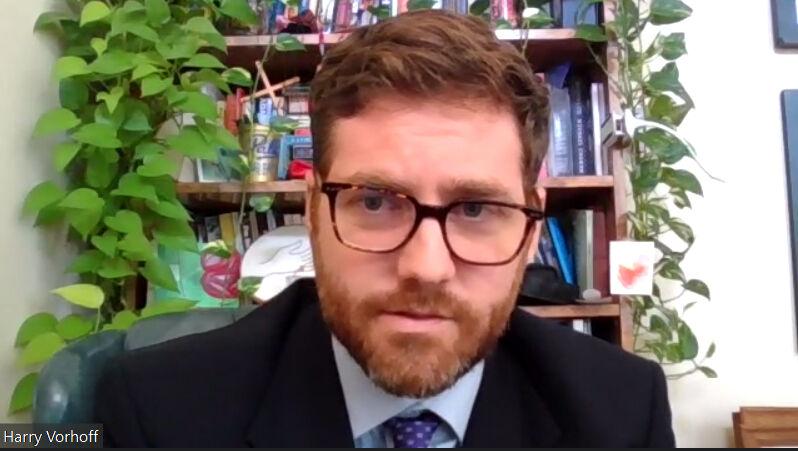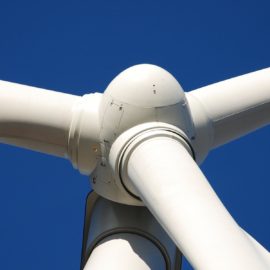
Despite the actions of the Governor, reaching net-zero emissions by 2050 is out of reach. The plans to be implemented don’t do enough.
The preliminary carbon reduction strategies developed by Louisiana Gov. John Bel Edwards’ Climate Initiatives Task Force fall far short of meeting his goal of net-zero carbon emissions by 2050, the task force learned Tuesday, just a week before the governor participates in the United Nations COP26 climate change summit in Glasgow, Scotland. In July, the group adopted seven high-level strategies for reducing the state’s share of the greenhouse gas emissions that worldwide are leading to hotter temperatures, higher seas and more intense storms. The strategies would cut Louisiana carbon-equivalent emissions dramatically, from the 217 million metric ton-estimate for 2018, but would still leave the state spewing 91.1 million tons by 2050, said Allison DeJong, a scientist with The Water Institute of the Gulf. Taking no action, the “business as usual approach,” would have the state producing 263.4 million metric tons in 2050. “This is a huge improvement from the business-as-usual case, but it doesn’t meet our net zero goals,” DeJong said. It also doesn’t meet interim goals of reducing emissions 28% by 2025 and 50% by 2030, which were set by Edwards when he announced creation of the task force in 2020. Those are the same goals included in the Paris Climate Accords, set during COP21 in 2015.
nola.com
The problem is that with 60+ percent of our emissions coming from industry they have to be a partner in any changes and with this being an “oil” state that is difficult.
The Water Institute was tasked with using a nationally recognized model to determine whether the task force’s plan would meet Edwards’ goals, with the information aimed at shaping a final reduction plan by January 2022. The biggest problem, DeJong said, is how the existing proposals address the energy needs of Louisiana’s industrial sector. The plan calls for oil refineries and petrochemical, steel and concrete plants to move away from oil and natural gas fuels in favor of electricity or hydrogen fuel. But much of the hydrogen would be produced with the use of natural gas. Using electricity instead of natural gas to produce hydrogen from water would result in a significant reduction in greenhouse gas emissions – but would require the electricity itself to be produced without using natural gas or other carbon-based fuels. That means an increasing reliance on wind or solar power, which likely will take decades to be developed at the scale needed in Louisiana.

We also need “green” hydrogen but that has been called only a small effect as there truly is no “green” hydrogen.
Lindsay Cooper, project manager for Edwards’ climate initiative, said the task force staff will identify ways of increasing the use of “green” hydrogen, made with low or no carbon. Too, she said, the staff will examine how to speed adoption of clean energy standards statewide by 2035 and to increase heavy industry’s capture of carbon emissions and permanent storage of it in underground geologic formations. That might reduce 2050 carbon emissions to 20 million tons. If Congress adopts a $60 per ton carbon tax, beginning in 2023 and completely in place by 2030, that could eliminate another 10 million metric tons in Louisiana, she said, leaving Louisiana with just 10 million metric tons of carbon emissions in 2050.DeJong and several task force members said there are a lot of assumptions built into the modeling.

Climate Initiatives Task Force
Of course enforcement and compliance wil be needed to bring in fines while we slowly creep to net-zero.
“You need to think about enforcement and compliance,” said Robert Verchick, a Loyola University environmental law professor. “Often in the planning stage, you assume compliance will be 100%. But if you rely on 100% compliance, you have to put a lot of money and trust into enforcement.” Educating members of the public about what any climate initiative will mean to their future – from potential jobs to the vehicles they drive and the source of electricity for their homes – should also be built into the plan, said Colette Pichon Battle, director of the Gulf Coast Center for Law and Policy. “It’s hard to do a moonshot program like this with the lack of education that now exists,” she said, joining the meeting remotely from Glasgow, where she’s attending the U.N. conference. “The political will can shift if we can show the public where there are areas of agreement.”
The state can help with rebates on solar as well as other renewables. We need to get the public involved.
The good news produced by the model seems to be the economic effect of major changes in the state’s industrial community, among urban governments and for residents who likely would be assisted in energy conservation measures through federal or state grants, possibly partly funded by the carbon tax. The plans anticipate subsidies to install solar panels, rebates for energy efficient products, energy efficiency retrofitting of residential, commercial and industrial properties and widescale deployment of electric chargers to serve a mostly-electric mix of individual and commercial vehicles. DeJong said the model predicts more than 165,000 new jobs lasting at least a year would be produced by 2050. The emission reductions themselves would be accompanied by fewer emissions of other pollutants such as particulate matter, nitrogen oxides and sulphur oxides, resulting in 1,800 fewer premature deaths and almost 55,000 asthma fewer attacks a year by 2050. Many of the new jobs would result from major changes in how the state now provides electricity to homes, businesses and industries. The plans call for eliminating all coal-fired power plants and replacing many natural gas-fired plants. That would leave only smaller natural gas units to feed electricity to a restructured transmission grid when solar and wind power are inadequate. Carbon emitted from those units would be captured and sequestered permanently underground, under the initial set of plans.
Some of the plans involve technologies that have not been tested or are not in wide use.
Several task force members, and members of the public participating in task force-sponsored information sessions, have warned that carbon capture and sequestration is still largely untested, although carbon dioxide has been injected into oil formations for years to produce more crude oil. The concern is whether the carbon dioxide, which becomes a semi-liquid at depth because of heat and pressure, will stay in place or might leak out of formations that have cracks or have abandoned oil wells passing through them. Eric Kalivoda, deputy secretary of the state Department of Transportation and Development, said Louisiana also should consider including new nuclear power plants as part of its non-carbon mix of electricity generation alternatives. Louisiana lags far behind other states in electricity produced by non-carbon fuels other than nuclear power, said Harry Vorhoff, senior staffer for the task force and deputy director of the Governor’s Office of Coastal Activities. Only 2.5% of the state’s electricity is now produced by wind, solar or hydroelectric outposts, he said, while the national average is 21% to 22%.

Climate Initiatives Task Force
In short, this is only a beginning. We will need to u[ the ante and do far more but, again, industry will have to be on board.



